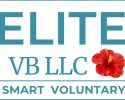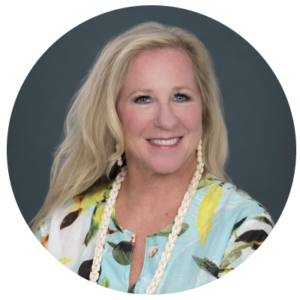Over 100 years ago, Gertrude Stein wrote “a rose is a rose is a rose” as part of her 1913 poem “Sacred Emily”. Often interpreted as meaning “things are what they are”, i.e., a statement of the law of identity such as “A is A”. In Stein’s view, the sentence expresses the fact that simply using the name of a thing already invokes the imagery and emotions associated with it.
You might ask what does this have to do with ancillary/voluntary benefits? Everything. The key words above are “imagery” and “emotions” and for those of us in insurance, we need to focus on “reframing” the messaging to maximize employer and employee participation in ancillary/voluntary benefit programs in 2023 and beyond.
The essential idea behind reframing is that “the frame through which a person views a situation determines their point of view. When that frame is shifted, the meaning changes, and thinking and behavior often changes along with it”.

Recently, a voluntary broker was explaining that voluntary benefits such as Accident, Disability, Critical Illness, Life, and Long-Term Care are tough to get employees “excited about”. I mean, who wants to buy anything that has the word “disability” or “critical illness” or “accident” in it (aren’t we trying to AVOID these incidences from happening)? However, for industry professionals like me who have been selling these products for a few decades, we know that these products are powerful, they provide a valuable financial safety net, can aid in recruiting and retention, and often are at zero cost to an organization.
Not to mention, I think the policies on the market today are so feature-rich with post-pandemic benefits that are beyond exciting, especially when compared to the policies we used to sell in the 90’s or 2000’s (guarantee-issue, mental health benefits, living benefits, etc.), and it’s our job to excite our audience.
An effective voluntary sales leader will have the talent to design engaging and visually enticing benefits communication that will drive high employee participation. With tools such as videos, websites, social media, text alerts, etc. delivered on our phones 24/7, savvy industry professionals should consider fresh language to raise initial awareness of the benefit offering as this is step one: opening the mind to being open to learn about the fresh and exciting benefits provided by their employer. The goal here is not to “push” employees to action in an active enrollment, but rather to “pull” them into the event with curiosity and an open mind.
Let’s look at some potential examples of “reframing” ancillary benefits that would get employees excited about the benefits:
- Disability Income Insurance reframe: “Paycheck Protection Program”: Many of us have been using this phrase for years and for a good reason – this is what a great disability plan does: replaces the paycheck when it stops due to an off-job injury or illness (with some new policies adding features such as mental health and substance abuse to name just a few).
- Critical Illness Insurance reframe: “Living Life Insurance Policy”, “Rainy Day Fund” or “Peace of Mind Plan”: Critical Illness is one of my favorite plans (and a “must” on every voluntary benefit menu) so this is an easy one. What a critical illness policy does is provide peace of mind so that WHEN a critical illness strikes (heart attack, stroke, cancer, etc.), a large, tax-free, lump sum benefit will be there to spend as the employee needs.
- Life Insurance reframe: Financial Safety Blanket, The Greatest Gift Policy. Having sold life insurance for over 25 years, I understand that life insurance means it pays upon death, but it really is bigger than that. It truly is a financial safety blanket for our loved ones and possibly the greatest gift there is as this is the one premium we pay that we have no control over the outcome, only that the cash will be there for whatever beneficiaries need at the time.
- Accident Insurance reframe: “Injury Financial Plan”, “Injury Care Program”: This plan is another one that should be a staple for any voluntary benefit offering, and what I really want to call a “No Brainer Plan” (referring to my blog on the Accident plan on my website on June 28, 2022, entitled “10 hands down reasons the Accident plan is a no-brainer”). There are so many reasons why an employee should consider this plan. One of my ten reasons is that a single parent with two children can purchase an accident plan for their family and with Assurity’s accident plan for $450 in annual premium. Collect on the embedded $75 wellness benefit twice per year for each person on the policy (three in this case) the premium would be at zero net cost to the policyholder, not to mention the cash that would be paid due to actual covered injuries.
- Pet Insurance reframe: “Companion Coverage”, “Fur Baby Care”. I also love Trupanion’s tag line “Medical Insurance for the life of your pet”. With over 70% of U. S. homes owning a pet, our four-legged extended family members need coverage too and while there’s nothing wrong with saying “Pet Insurance”, this benefit is easy to build excitement with as we love our pets and want them healthy for as long as possible.
But wait a minute: one might say that we don’t need to “reframe pet insurance” because that one isn’t “boring”. And best practices might be to blend the non-boring policies in with the boring ones. But again, I am dispelling that myth with this blog/article as us as industry professionals must bring our passion and creativity to the benefits we offer . As well, isn’t one aspect sales success is to separate what you are offering from the rest of the pack, i.e. ensuring your message has a “key differentiator”?

My point here is that we can either stay in a safe “lane” when promoting insurance products at the workplace, or, with a little creativity, reframe the offering so we are allowing the employee to being receptive to learning about how the benefit can help them in their lives while making financial sense for their pocketbook.
This reframing of the messaging can lead to higher employee participation, which benefits not only more employees, but also the employer and the broker, as well as potentially driving pre-tax tax savings to the company’s bottom line.
Another best practice for creative reframing is to take risks with fun pre-enrollment communication that matches the employee demographic. Younger employees may not know what disability insurance is, but when we reframe it as a “paycheck protection program” we’re doing them a favor by explaining the product in terms that they can relate to. The visuals that can go with it can also be fun (and a bit goofy perhaps) as we’re all tired of boring open enrollment materials… aren’t we?
Not to mention, why offer voluntary (or employer-paid benefits) without leveraging the messaging to aid in recruiting and retention? Another visual I love is Trupanion’s CEO’s video, showing how their pet coverage is superior to other carriers by comparing canned tuna. It is simple, fun, and effective. Visuals are where it’s at, and this outstanding pet insurance company is reaping the benefits (they are currently ranked #1 in America, chosen by Veterinarians).

In closing, we know a rose is a rose, but we can wait to explain how disability (or accident, or critical illness) works with insurance language/jargon once they dive into the policy details. Instead, to generate the initial excitement in 2023, let’s think outside of the box, get creative, and have fun using words that reframe the offering, as we can only make a difference in employees’ lives if they have the policies in place!
Pamela Whitfield, CVBS




